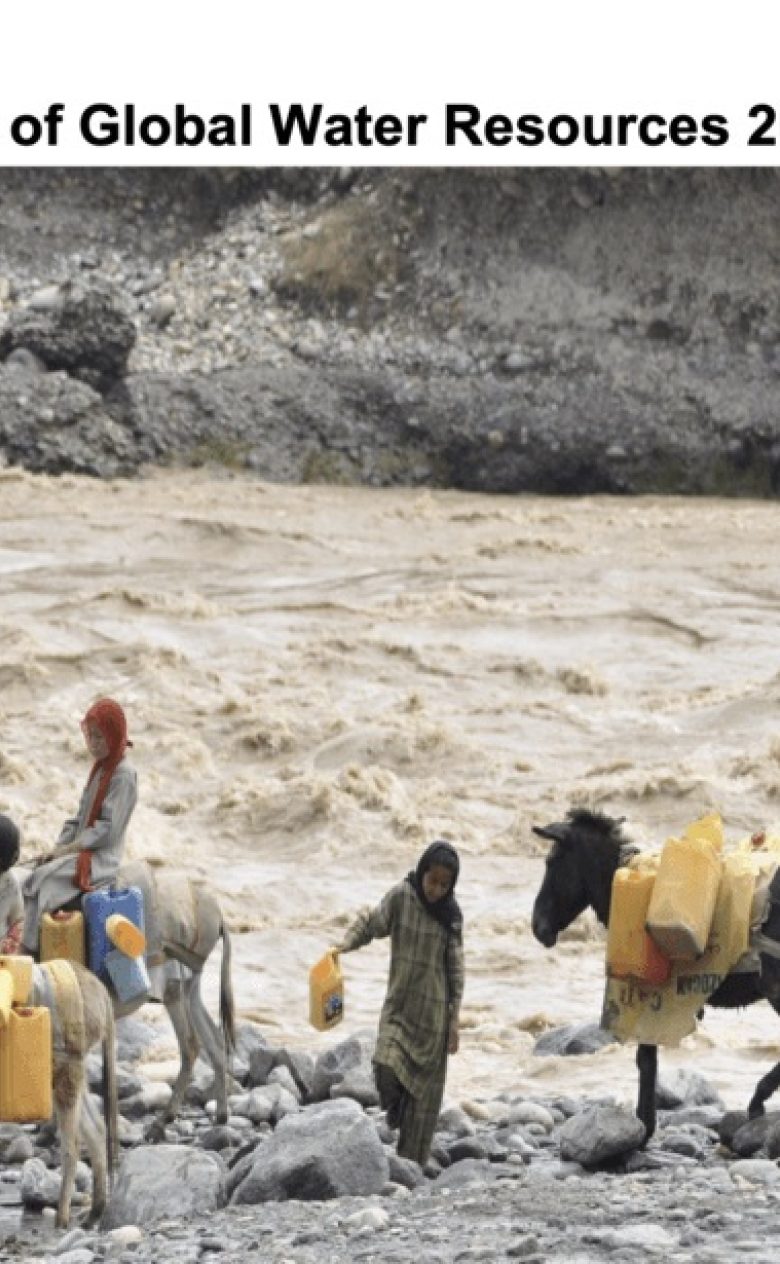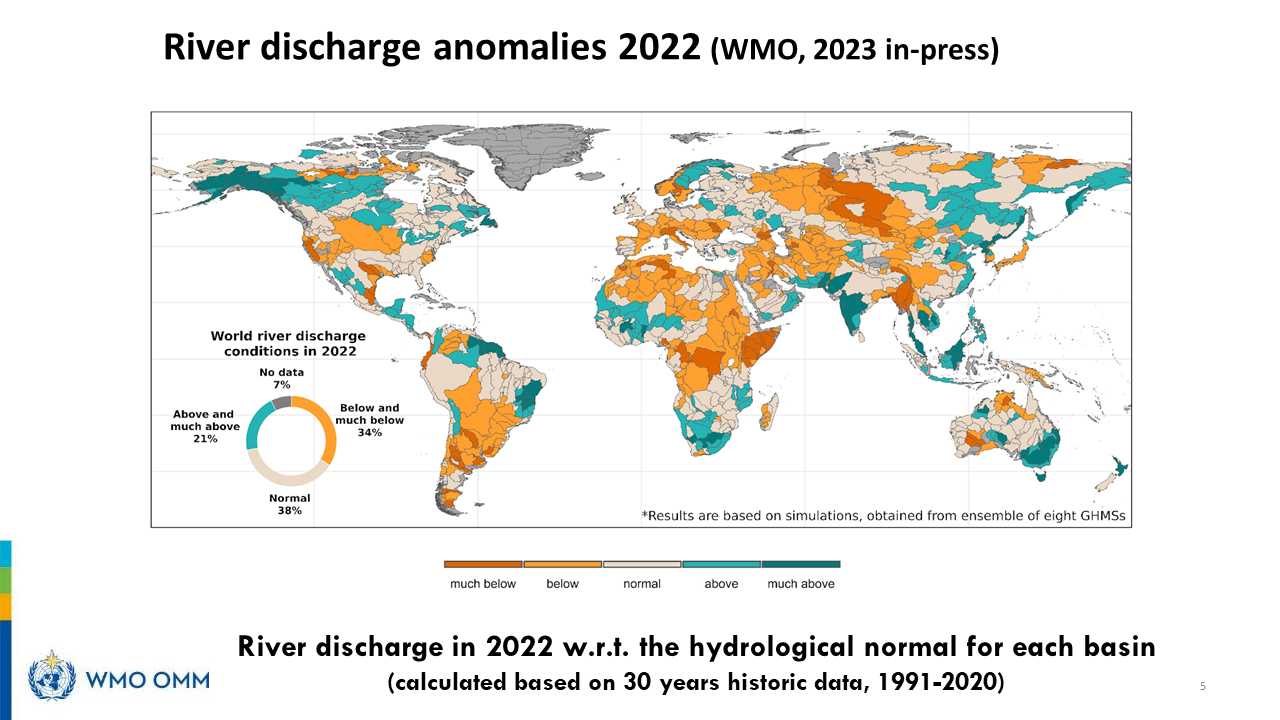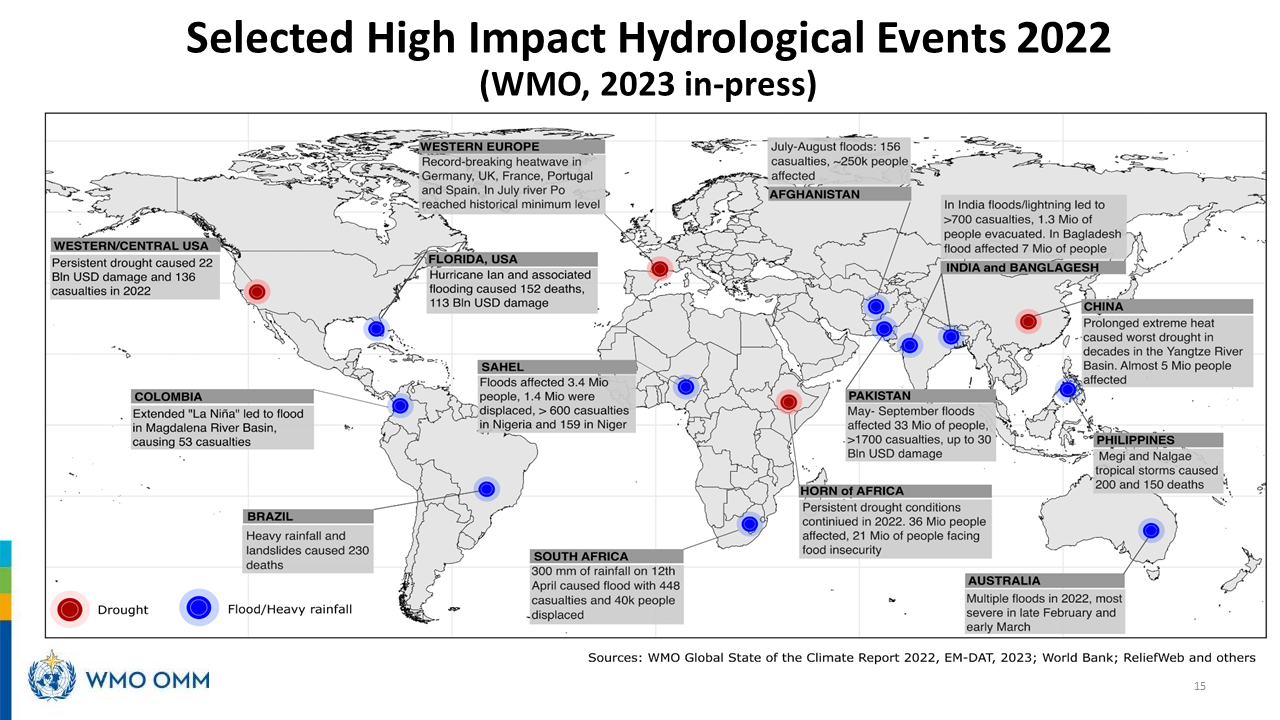Global long-term water security under pressure
Climate change and human activity have caused the hydrological cycle to spin out of balance, a new report by the United Nations World Meteorological Organization (WMO) has found. The report provides a comprehensive assessment of global water resources.

Droughts and extreme rainfall take a heavy toll on lives and economies. Melting snow, ice, and glaciers increase risks such as flooding and threaten long-term water security for millions of people. Currently, 3.6 billion people lack access to water for at least one month a year. Estimations by UN Water predict that this figure will rise to more than 5 billion by 2050.
Deltares contributed to this WMO report by sharing information on:
- model simulations of river discharges for all of Europe at 1km2 for the period 1990-2022;
- simulations of inflow and water volume from dams worldwide for period 1990-2022; and
- anomalies of measured reservoir surface area from Global Water Watch.
WMO's advice: invest in monitoring and data sharing
Far too little is known about the true state of the world’s freshwater resources. The WMO State of Global Water Resources 2022 report has called for a fundamental policy shift, stating we cannot manage what we do not measure.
Improved monitoring, data-sharing, cross-border collaboration, and assessments of water resources – and an accompanying increase in investments are required to facilitate this. They are vital to ensuring society is able to cope with increasing water extremes; be it too much or too little. This report is a call to action for more data sharing to enable meaningful early warnings and for more coordinated and integrated water management policies that are an integral part of climate action.
The report includes contributions from dozens of experts, and complements the WMO’s flagship State of the Global Climate report in order to provide integrated and holistic information for policy makers.
This report is an important release. We are dealing with a changing and increasingly erratic climate. Bringing together various hydrological model simulations and available measurements of runoff, groundwater, glaciers, and reservoirs, as this report does, provides a reliable picture of the status and trends of water availability globally every year. This information helps policymakers to better manage water and reservoirs in the near future This way we can better cope with increasing extremes.
Albrecht Weerts, expert data model integration and hydrological forecasting at Deltares
Several hydrological variables determine water resources
The report provides an independent and consistent global scale quantitative assessment of water resources in large river basins, in comparison to the long-term average for various variables like river discharge, groundwater, evaporation, soil moisture, inflow to reservoirs etc.
In 2022, over 50% of the global catchment areas experienced deviations from normal river discharge conditions. Most of these areas were drier than normal, while a smaller percentage of basins displayed above or much above normal conditions. 2021 experienced similar conditions. More than 60% of major water reservoirs saw below or normal inflow, which provides a challenge for providing water to all users in an increasingly variable climate.
Throughout 2022, anomalies in soil moisture and evaporation echoed those in in river discharge conditions. Europe, for example, saw increased evaporation and decreased soil moisture and river flows during the summer because of a major heatwave and drought. This led not only to challenges in agriculture but also to a closure of power plants due to a lack of cooling water.
The switch from La Niña in 2022 to El Niño conditions in 2023 will likely have a major impact on the hydrological cycle; this will be covered in next year’s report.

Why is hydrological balance of importance
An imbalance in hydrology causes too much or too little water and leads to different disruptions and disasters. Some examples from 2022:
- Severe droughts impacted many parts of Europe in the summer of 2022, posing transportation challenges in rivers like the Danube and Rhine and disrupting nuclear electricity production in France due the lack of cooling water.
- Navigation on the Mississippi River in the USA was affected by the extremely low water levels, as a result of a continuous drought in the USA.
- In South America, the La Plata river basin endured a continuation of drought conditions since 2020. This caused a significant drop in hydropower production in 2022, resulting from low river flows. There were several instances of no water supply in Paraguay during 2022.
- Severe drought in the Yangtze River Basin in China led to much lower than average river discharge, inflow to reservoirs, and soil moisture.
- Prolonged drought led to a major humanitarian crisis in the Horn of Africa. By contrast, the Niger Basin and much of South Africa recorded above-average river discharge, linked to major flood events in 2022.
- A mega flood hit the Indus River Basin in Pakistan, killing at least 1,700 people, affecting 33 million, and causing an estimated more than US$ 30 billion in economic losses. A heatwave earlier in the year increased meltwater from glaciers, increasing river levels which were then swelled by severe monsoon rainfall which was more than twice the average in July and August.

Global cooperation
The State of Global Water Resources report contains input from a wide network of hydrological experts, including National Meteorological and Hydrological Services, Global Data Centres and global hydrological modelling community members.
You have not yet indicated whether you want to accept or reject cookies. This means that this element cannot be displayed.
Or go directly to:

